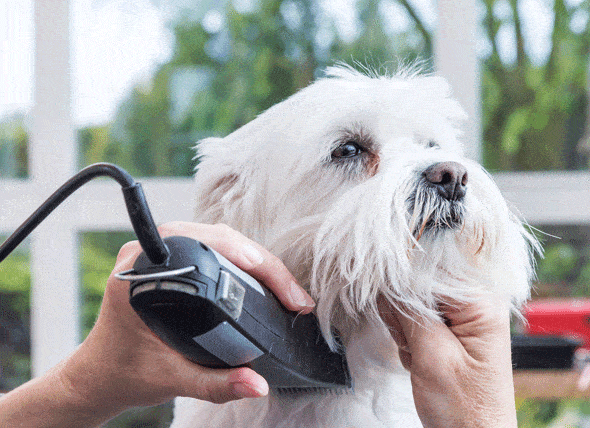A clean or shaved face could give any dog with a hairy face a unique and edgy look, not to mention the added practical benefits for dogs with medical issues. Not having a fuzzy face on dogs that suffer from excessive drool because of missing teeth, for example, will eliminate a potential bacteria haven that can easily get infected and will also make it much easier to keep them clean and dry.
When clipping a dog’s face, it is crucial to be aware of the shape of your dog’s bone structure around the eyes, lips, and folds of the skin, as well as the areas where the lack of fat makes the skin lie right on top of the bone.
Dogs come in many different shapes and sizes, with many variations within their particular breed. In other words, you need to carefully go over their face and locate protruding bones and edges where the clipper could scratch and hurt the skin.
As a general rule, clippers must be handled with caution. This is even more important when they are being used to clip a dog’s face. If your dog hasn’t had his face shaved before, using a No. 10 blade is generally the safest way to go.
Maintaining a firm grip on your dog, but in a way that he will still feel comfortable, will help keep him calm during the clipping.
Slowly approach the dog with the clippers turned on to let him get used to the noise and vibration. Touching him with the back of the clipper is a good way to show your dog that everything is okay.
The hair on the face should be clipped against the grain. Holding his ears back will give you good visibility and will keep the skin taut, making it easier to clip.
Start by clipping in a straight line from the base of the ear to the outside corner of his mouth. Then gently pull the skin back and proceed to carefully shave the side of the muzzle moving forward in the direction of the nose.
As when handling other grooming tools around the eyes, always point them outward and away from the eyes to avoid any accidents.
The chin usually has a lot of folds and creases or wrinkles, so stretch them out with your fingers while shaving from the chin to the Adam’s apple. Follow the direction of the hair growth or go against the growth for a shorter clip. If the skin is not accustomed to being shaved, avoid going against the grain.
Be aware of any cowlicks on the dog’s neck and try to position the clippers following the direction of the hair. We find that using just one corner of the blade will give you more control when trimming the area near the lips.
Follow this same method to clip the bridge of the nose, starting in between the eyes and then moving forward to the nose.
Holding the dog’s mouth closed will prevent the tongue from sticking out, or will at least make you aware of when it is about to happen.
A good trick to keep the dog calm and quiet is to blow on him very gently, almost like a whisper. This will make him focus on that for a few precious seconds so you can execute your cuts.
Talking to your dog at this stage is counterproductive. You want to be quiet, soothing, and calm.

